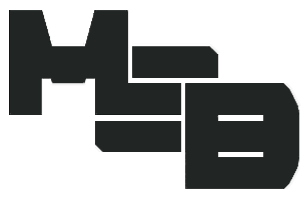Camouflage

The most commonly sold camouflage for civilians might be Real Tree or Mossy Oak, its primary purpose: blending in during a hunt (or just stylin’ at the mall). But when we think of camouflage for survival, our mindset must change. This article draws heavily on the US Army’s FM20-3 – Camouflage manual, but I’ve adopted many of the military techniques for civilian use.
Camouflage…
is the use of concealment and disguise to minimize the detection or identification of people.
The general principle is that we should conserve strength or decisive action. You can do that by increasing security and providing protection from attack (make it hard for the enemy to find you so you can set the terms of if and when you will strike them). Camouflage can help with that, but with anything, it requires practice.
Prioritize your actions
(1) Mission. The mission is always the first and most important consideration. Camouflage efforts must enhance the mission but not be so elaborate that they hinder the mission.
Your mission might simply be to not get killed or captured, or it might be to get to a buddy’s house, or get water from the stream, or build your team’s supplies.
(2) Enemy. The enemy’s detection capabilities will influence the type and amount of camouflage needed to support the unit’s mission. Whenever possible, an intelligence analysis should include the types of detection equipment the enemy uses.
Are you going up against a dumb biker gang, looters, or a more sophisticated enemy?
(3) Terrain. The terrain dictates what camouflage techniques and materials are necessary. Skillful use of the terrain’s cover and concealment properties has a decisive significance in camouflage.
Different terrain types (such as urban, mountain, forest, plains, desert, and arctic) require specific camouflage techniques.
(4) Your team. The team must be well-trained in camouflage techniques that apply to their mission, team, and equipment. A change in environment or mission will often require retraining. Leaders must also consider the alertness of their team.
Careless efforts at camouflage are ineffective and may disclose the team’s location. The analysis should address the relative detectability of friendly equipment, as well as the signatures that the unit normally transmits.
(5) Time. Time is often the critical factor. Elaborate camouflage may not be practical for the tactical situation.
The type and amount of camouflage needed are determined by the time the team will occupy the area, the amount of time available to camouflage, and the amount of time necessary to re-camouflage the team after it moves.
Ideas on training:
• Have the team leader observe from the enemies’ point of view.
• Use photographs or video to self-evaluate (consider using RC planes / helicopters to take aerial photography)
• Use another team to make training more realistic.
Key suggestion on movements and evasion:
• Avoid populated areas.
• Get out of sight- take equipment and trash with you.
• Avoid being directly seen by the enemy or indirectly seen by animals or detection devices.
• Shape, shadow, color, texture, and patterns as well as movement, temperature, and radar signature can give you away. Remove jewelry, patches or anything else that would attract attention. Change body outline. Hoods, dirt or make up on skin, charcoal ashes, berries, etc. Use foliage to break up human outline. Don’t forget to treat your equipment to the same.
• Don’t move against a skyline (tops of hills or buildings).
• Be prepared to change color or texture to match your surroundings.
• Shelter- lends to concealment. Keep it away from roads or trails. Natural shelter is best (minimum prep and doesn’t look disturbed). Conceal fresh earth and stumps. Camo straight lines and angles. Use brush, stones, and earth.
• Be careful of tracks- especially in snow. Bad weather can be your friend.
• Avoid camp fires- consider the proximity of enemy, time of day, weather, fuels, and need for fire? Is it a vital need? Keep small and underground if possible (Dakota Fire Hole). Use dry hardwood only. Early before dawn or in the evening at dusk.
Forests generally provide the best type of natural screen against optical reconnaissance, especially if the crowns of the trees are wide enough to prevent aerial observation of the ground. Forests with undergrowth also hinder ground observation. Deciduous (leafing) forests are not effective during the months when trees are bare, while coniferous (evergreen) forests preserve their concealment properties all year round.
Move along roads and gaps covered by tree crowns. Use shade to conceal vehicles, equipment and personnel from aerial observation. In the northern hemisphere, the northern edge of forests are shaded most of the time.
As far as camouflage clothing goes, the debate rages on about which is the best. The truth is that no one pattern is perfect for every circumstance.
That said, there are some that perform better than others. ATACS-AU and MultiCam are the leading two patterns in military operations today. The reason for that is that they both work very well to disguise the shape, color, texture and pattern of the human form. MultiCam goes a step further and masks near IR signatures.
I recommend the use of any camouflage, but especially MultiCam or ATACS colors and patterns for your clothing, head gear, rifle, pack, and body armor when possible- remember that webbing on your gear can be used to add foliage.


